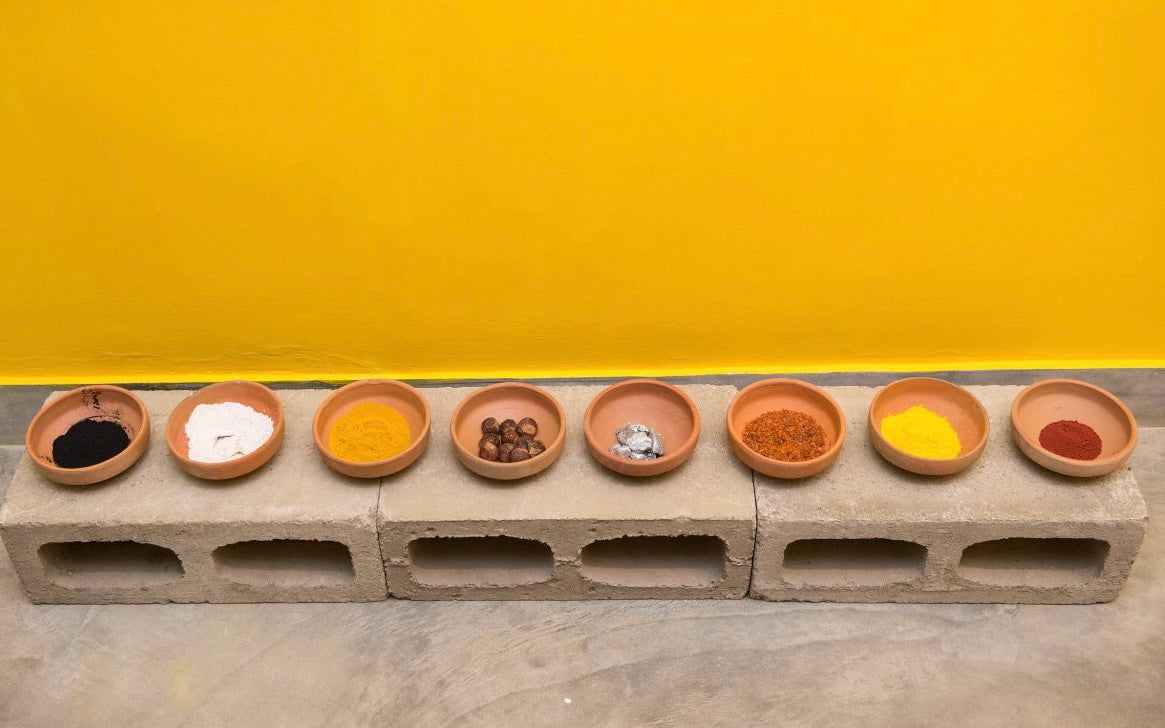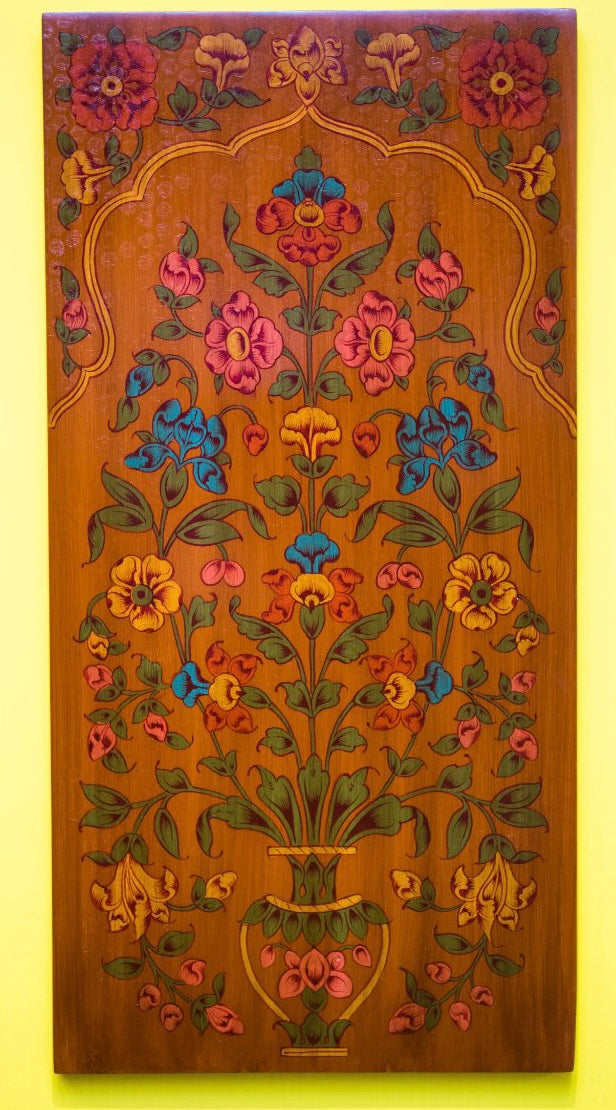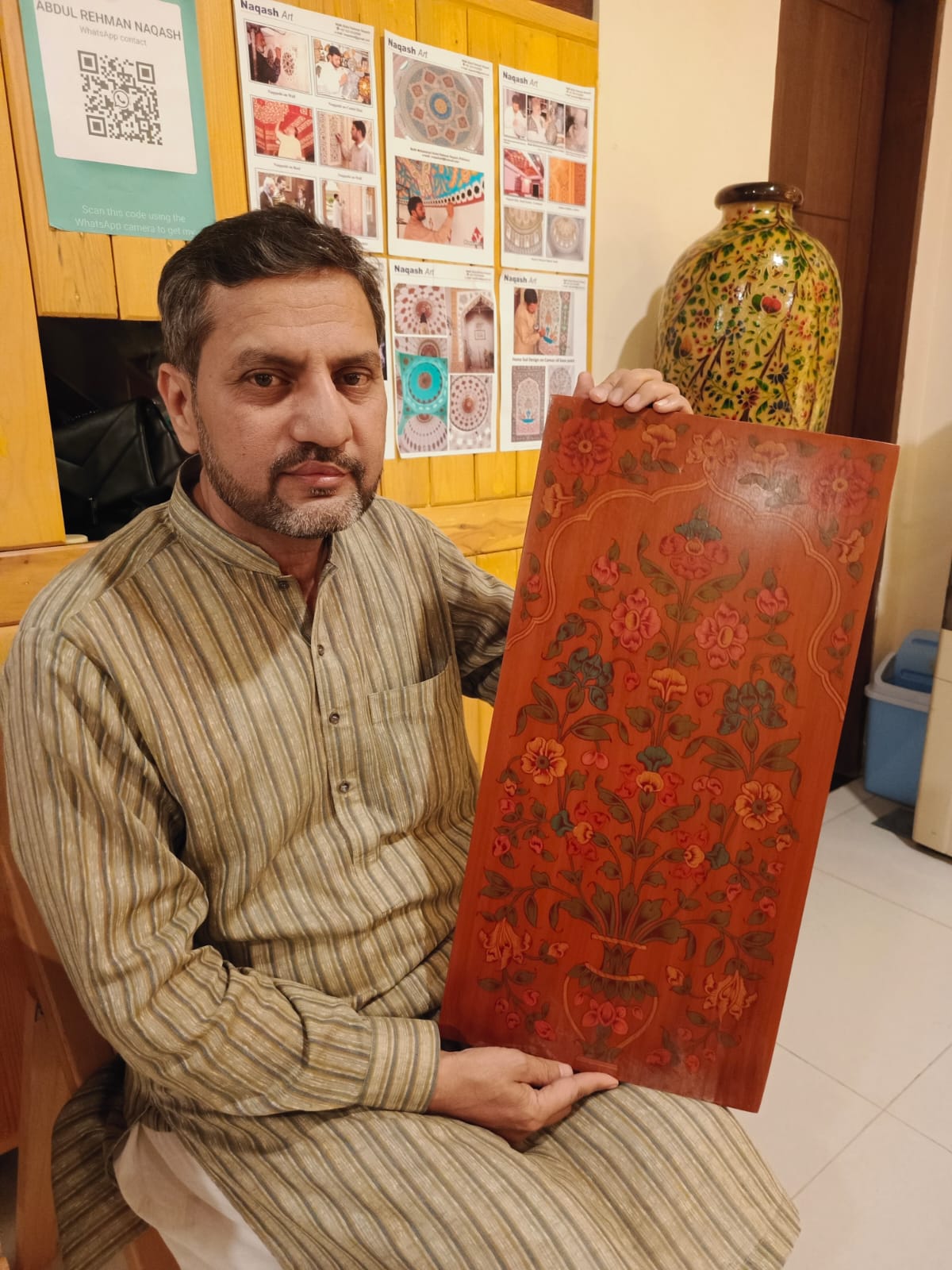Multan, Punjab
Naqqashi
Naqqashi is a traditional craft of ornamental painting and engraving, known for its intricate designs on surfaces like wood, metal, paper, and pottery. Rooted in Mughal-era craftsmanship, Naqqashi features elaborate floral patterns, geometric motifs, and Islamic calligraphy, often hand-painted or engraved with precision. This art form is seen in furniture, jewelry boxes, architectural elements, and decorative objects, adding an elegant, artistic touch to everyday items.



Collapsible content
Craftsmanship and Techniques
1. Surface Preparation
Artisans begin by smoothing the chosen surface, whether it be wood, metal, or pottery, to prepare it for the intricate detailing.
2. Hand Painting or Engraving
Using fine brushes or chisels, artisans create detailed patterns, often inspired by Mughal, Persian, and Islamic art traditions. Common designs include floral vines, arabesques, and calligraphy, reflecting cultural influences.
3. Color Application and Finishing
Bold, vibrant colors are applied, followed by a lacquer or polish finish to protect the artwork and enhance its brilliance.
Cultural and Historical Significance
Naqqashi is closely associated with the Mughal era, symbolizing luxury and artistic refinement. It was commonly used to embellish royal palaces, mosques, and personal items, reflecting the cultural and artistic heritage of the region.
Modern Relevance
Today, Naqqashi is highly valued in home décor and furniture design, with artisans continuing to create hand-painted and engraved pieces. It is also used in miniature painting and architecture, blending tradition with modern aesthetics in both local and global markets.
Shop Naqqashi products
-
Example product title
Regular price Rs. 20Regular priceUnit price / per -
Example product title
Regular price Rs. 20Regular priceUnit price / per -
Example product title
Regular price Rs. 20Regular priceUnit price / per -
Example product title
Regular price Rs. 20Regular priceUnit price / per
